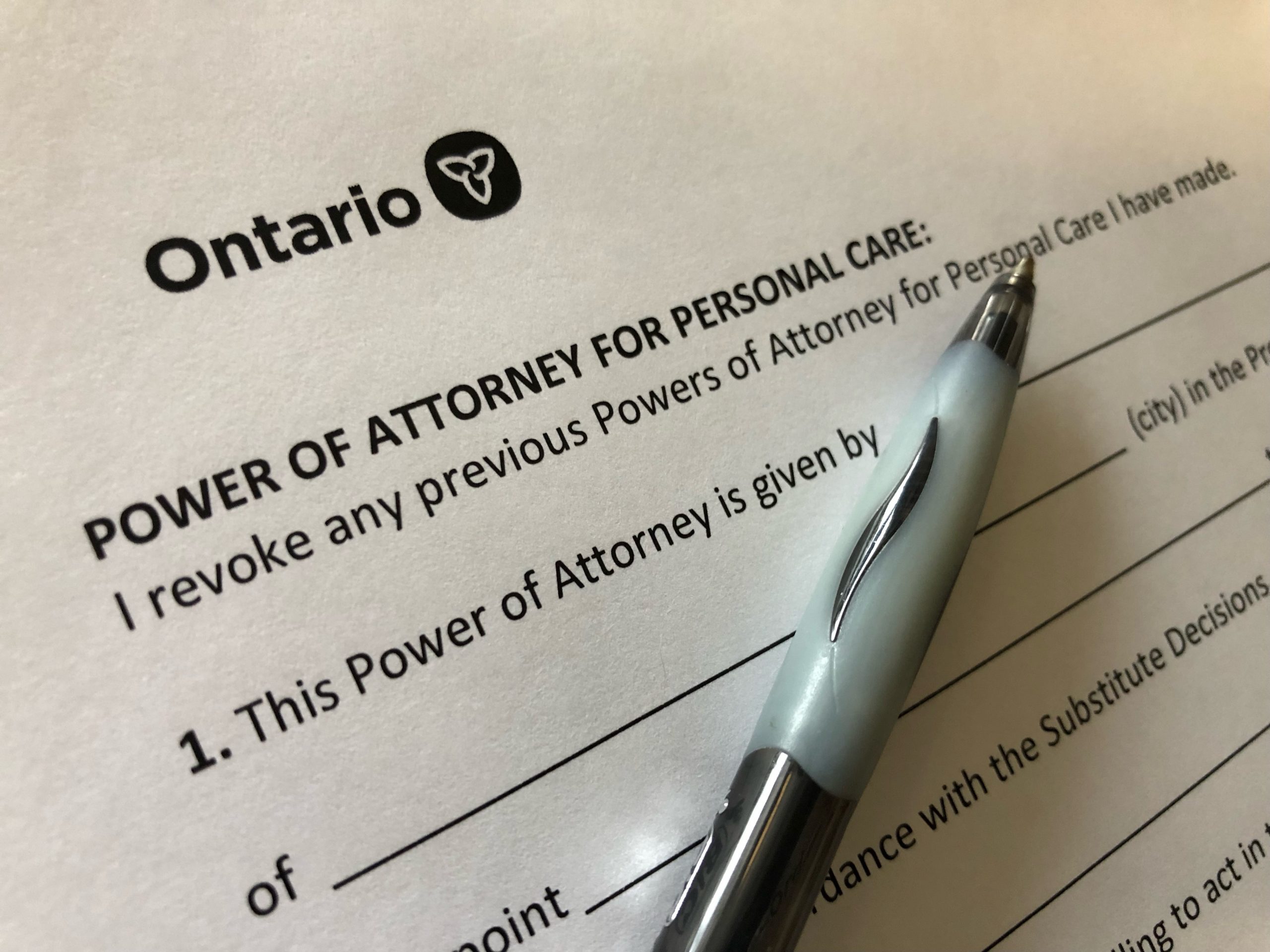Sarah Grace
VIDEO: Advance Care Planning
This short video provides a quick overview of Advance Care Planning and choosing a Substitute Decision Maker.
As part of advance care planning in the United States, it is essential to designate a person, known as a healthcare proxy or durable power of attorney for healthcare, who will make medical decisions on your behalf if you become unable to do so. This designation is typically made through a legal document called an Advance Directive or a Durable Power of Attorney for Healthcare (National Institute on Aging, 2021). The healthcare proxy is similar to a Substitute Decision Maker (SDM) in Canada and is tasked with ensuring that your medical care aligns with your expressed wishes and values.
An Advance Directive often includes a Living Will, which outlines specific medical treatments you would or would not want in certain situations, and the designation of a healthcare proxy. These documents ensure that your medical preferences are respected and legally binding, even when you cannot communicate them yourself (American Bar Association, n.d.).
Selecting a healthcare proxy requires careful consideration. This individual should be someone who knows you well, understands your values and wishes, and is willing to advocate for your preferences in potentially challenging medical situations. Clear and open conversations about your beliefs, end-of-life preferences, and expectations are crucial. These discussions help ensure that the person you choose is prepared to honor your wishes and make decisions that reflect your values (National Institute on Aging, 2021).
In the United States, advance care planning is often supported by state-specific laws, and the requirements for completing an Advance Directive vary by state. However, most states recognize the importance of having a trusted decision-maker and a clear written document to guide medical professionals and loved ones. Tools like POLST forms (Physician Orders for Life-Sustaining Treatment) are also available in many states to ensure that specific treatment preferences are followed by healthcare providers in emergency situations.
In Arizona, advance care planning is governed by specific state laws that outline the creation and use of advance directives and related documents. These legal instruments ensure that an individual’s healthcare preferences are respected when they are unable to communicate their decisions.
Advance Directives in Arizona
Arizona law recognizes several types of advance directives:
- Health Care Power of Attorney: This document allows you to appoint a trusted individual to make healthcare decisions on your behalf if you become incapacitated. The appointed agent should be familiar with your values and medical preferences.
- Living Will: This directive specifies your wishes regarding medical treatments in end-of-life scenarios, such as the use of life-sustaining procedures.
- Mental Health Care Power of Attorney: This form designates an agent to make decisions related to your mental health treatment if you are unable to do so.
To be legally valid in Arizona, these documents must be signed in the presence of a witness or a notary public. The witness must be at least 18 years old and cannot be a family member, beneficiary, or directly involved in your healthcare.
Arizona Healthcare Directives Registry (AzHDR)
Arizona offers a centralized system, the Arizona Healthcare Directives Registry (AzHDR), where individuals can store their advance directives. This registry ensures that healthcare providers have timely access to your directives during medical emergencies. As of September 24, 2021, the management of advance directive documents transitioned from the Secretary of State’s Office to AzHDR.
POLST in Arizona
For individuals with serious illnesses or advanced frailty, Arizona utilizes the Provider Orders for Life-Sustaining Treatment (POLST) form. The POLST form translates a patient’s treatment preferences into actionable medical orders, ensuring that these preferences are honored across various healthcare settings. Completion of the POLST form involves a detailed discussion between the patient and their healthcare provider about the patient’s medical condition, treatment options, and personal values. Both the patient and the provider must sign the form for it to be valid.
Key Considerations
- Regular Updates: It’s essential to review and update your advance directives and POLST form periodically, especially after significant health changes, to ensure they accurately reflect your current wishes.
- Accessibility: Provide copies of your advance directives to your appointed healthcare agents, primary care physician, and close family members. Registering these documents with AzHDR enhances their accessibility during emergencies.
- Legal Compliance: Ensure that all documents comply with Arizona state laws to guarantee their validity and enforceability.
By proactively engaging in advance care planning and utilizing resources like AzHDR and the POLST program, Arizona residents can ensure that their healthcare preferences are respected and followed.
Conversations about advance care planning can be challenging but are essential for ensuring that your healthcare aligns with your values. Discussing your wishes with loved ones and your designated healthcare proxy not only helps clarify your preferences but also reduces the burden of decision-making for your family during difficult times.

Click the links below to learn more about selecting an SDM. The third link is to a document that helps you to lay out your advanced care directives and select an SDM/APC (The completion of this document is the basis of the assignment for this Chapter):
Engaging in Advanced Care Planning for COVID-19

